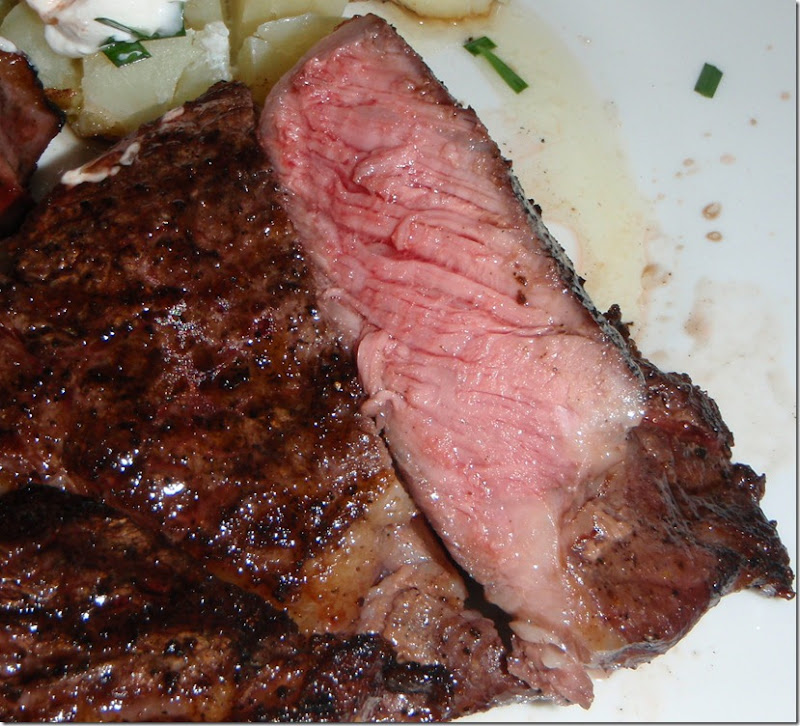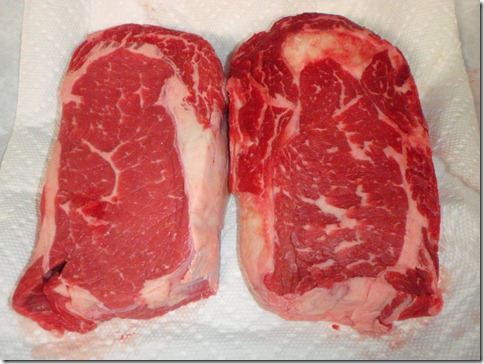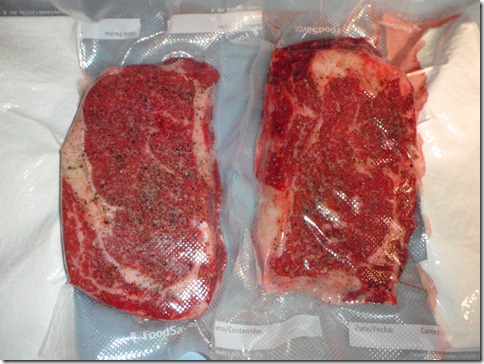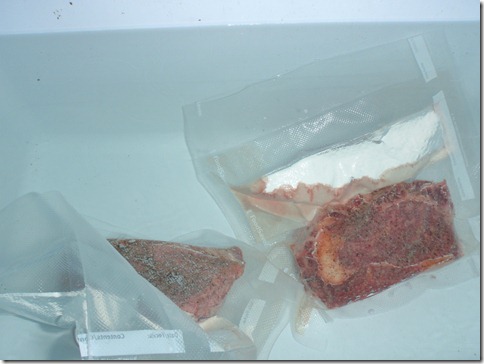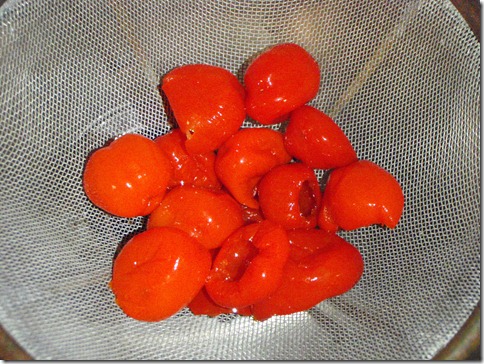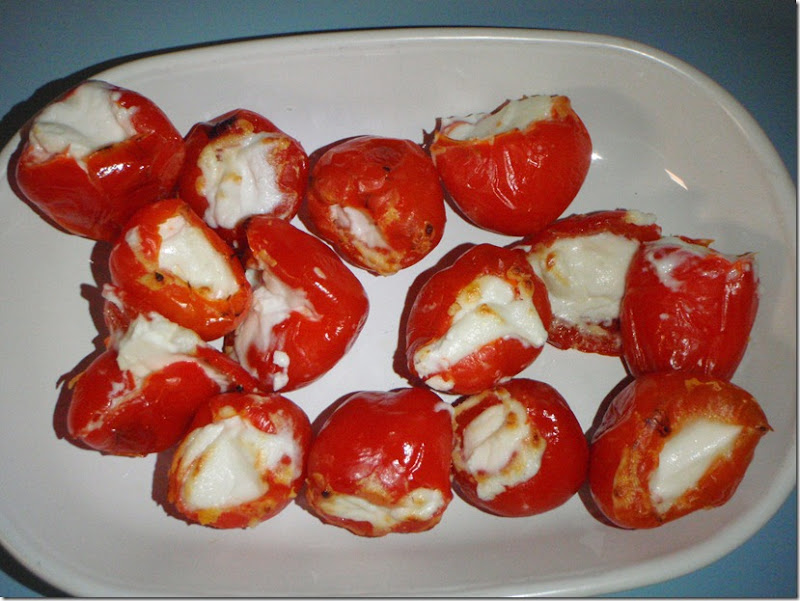Ah, near perfect medium-rare steak from edge to edge with no large, grey ring of overdone meat around the sides. (I’m sorry the plate is so messy; I’m always rushing to eat when the food is done and forget proper plating.)
I’ve been interested in trying sous-vide for a couple of years but didn’t want to try to build a homemade system and certainly couldn’t afford a commercial setup. With the SousVide Supreme now available for home use, the technique is approaching the realm of the possible; but I wanted to give it a trial run before thinking of plunking down around $500 (though it’s not that much more than a nice KitchenAid mixer). Thanks to J. Kenji Lopez-Alt at Serious Eats, a limited version (not hot enough for vegetables, thickness of meat and cooking time limits) of sous-vide is possible for just about anyone. In the comments section of the article Cook Your Meat in a Beer Cooler: The World's Best (and Cheapest) Sous-Vide Hack, I found a wonderful calculator Sous-Vide in a Cooler - water temperature calculator that will tell you what temperature of water is needed based on the dimensions of your cooler; type and starting and ending temperature of the meat, etc. Check out Kenji’s Sous-Vide 101: Prime Steak Primer for a detailed explanation of the process.
Start with a couple of rib-eyes.
Season with fresh-ground black pepper and Kosher salt and enclose in plastic. You can use Ziploc bags with the immersion method to remove as much air as possible, but it’s nice to vacuum seal the bags if you have one.
The steaks relaxing in their (should have been) 139.6 degree bath. (I swear I scrubbed out the cooler – those are stains – not dirt. And the steaks are vacuum sealed anyway.) I was pretty lucky for a first try. My hot tap water is 130 degrees. I filled the cooler to 8” deep with the hot tap water then added 1” of simmering water from a large pot on the stove. It looked like about a gallon of simmering water (and that’s what the Sous-Vide in a Cooler - water temperature calculator shows). I had figured on a final water depth of 9” and the temp. was 139.9 degrees at this point. I probably should have added some ice to get the temp. to 139.6, but I was afraid to mess with it too much. That may be why the steaks weren’t quite perfectly medium-rare; or, perhaps the final sear on the charcoal grill lasted a tiny bit too long. I’m sold on the technique, however. The steaks were tender, juicy and delicious. There’s no need to rush with sous-vide steaks. Suddenly decided you want to oven-bake rather than microwave your potatoes, forgot to decant the wine, or expecting chronically-late dinner guests? The steaks will stay at your chosen doneness for another hour or two, no worries.
